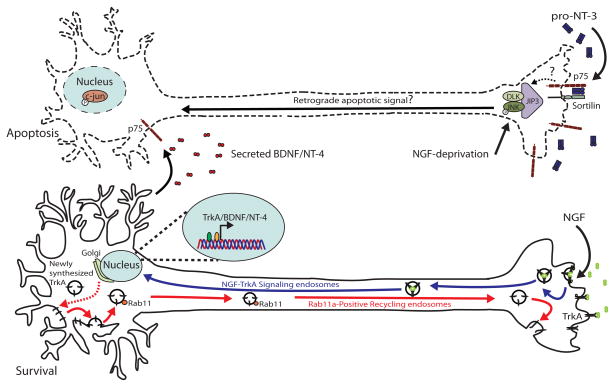Figure 2.
Axonal trafficking of survival and apoptotic signals underlie a developmental competition for target-derived NGF. In competing neurons, retrograde NGF signaling regulates a positive feedback loop by which NGF enhances sensitivity to itself by activating the transcription of its receptor, TrkA. Increased responsiveness to ligand may also result from anterograde transcytosis of TrkA receptors from soma surfaces to axon terminals via Rab11-positive recycling endosomes. In winning neurons, retrograde NGF signaling regulates the transcription of BDNF and NT-4 that then exert a paracrine effect on punishing/killing neighboring neurons that do not gain sufficient access to NGF. BDNF/NT-4-dependent apoptosis is mediated by p75 receptors expressed on the “losing” neurons. DLK, JNK and JIP3 may be part of an apoptotic complex that is activated locally in axons upon NGF deprivation and retrogradely transported to mediate c-jun phosphorylation in cell bodies and neuronal cell death. Developmental apoptosis may also be elicited by target-derived pro-neurotrophins, such as pro-NT-3, that act on axon terminals to initiate a retrograde death signal, likely via activation of a p75-sortilin receptor complex. It remains to be determined if similar or distinct retrograde signals are activated upon NGF deprivation and by pro-neurotrophins.

